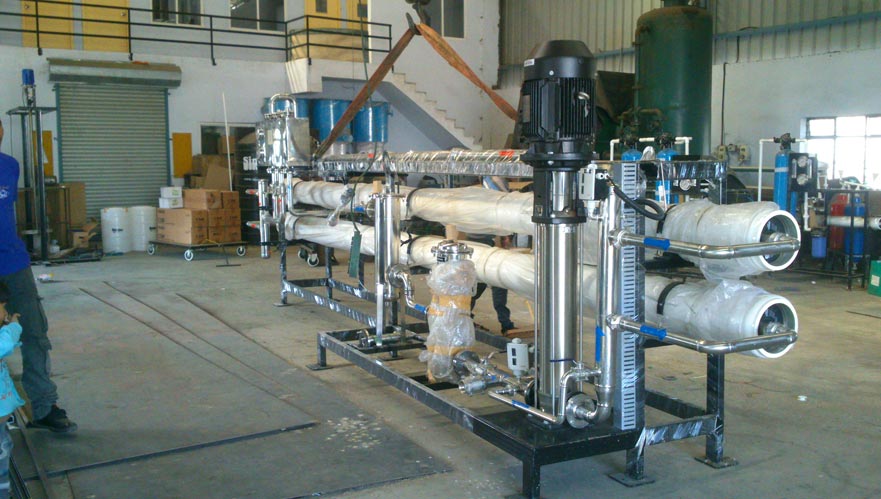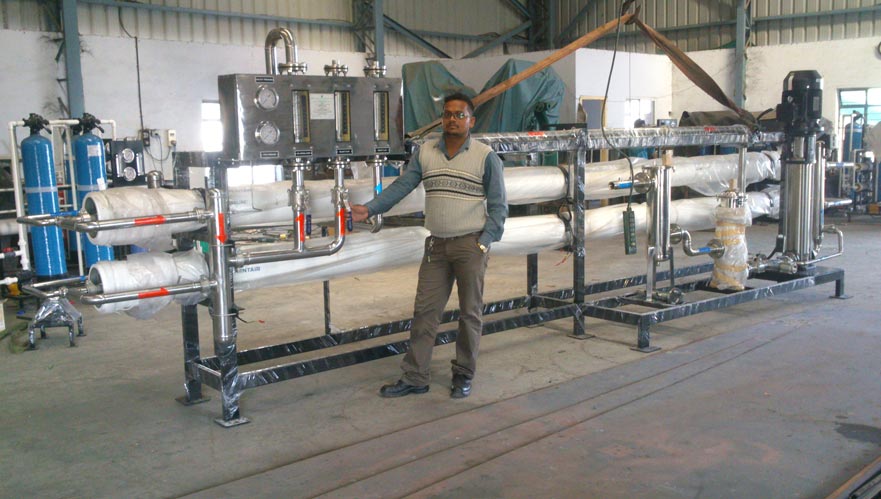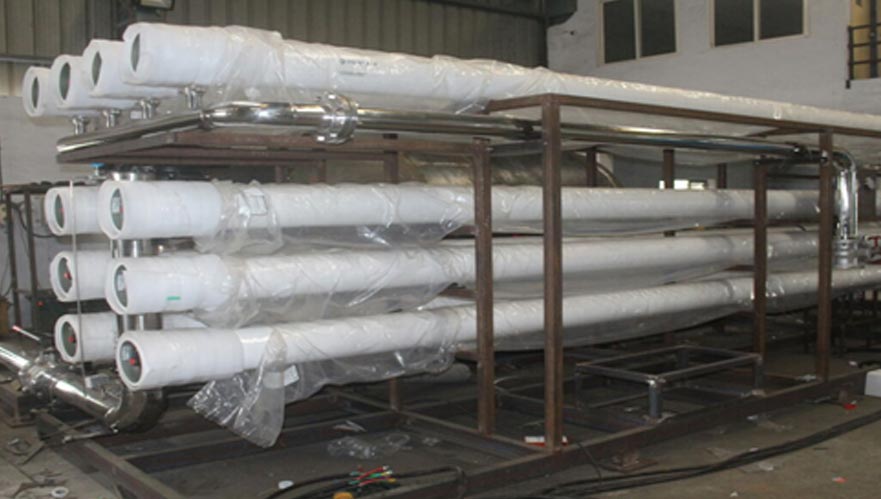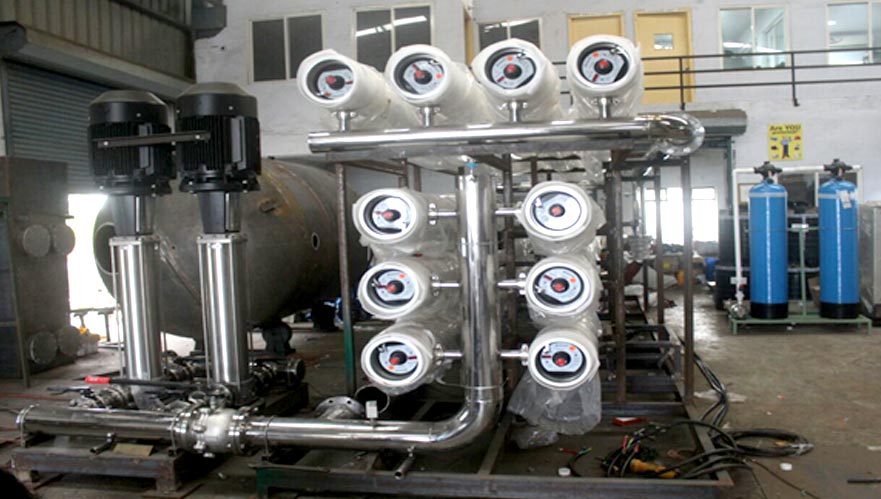ETP Membrane System
BT WATER TREATMENT PVT.LTD have introduced the revolutionary concept of directly treating the effluent through membrane systems and recycling of water.
We are design low fouling hydrophilic membranes system having high COD and BOD tolerances. These membranes are able to handle high TDS and SS loads and are able to take in TDS and COD of about 40,000 ppm directly.
The smooth surface and its near neutral to negative charge gives the added advantage of it being resistant to biofilm formation and fouling.Our membrane systems clubbed with an evaporator will make an industry almost zero discharge industry thereby reducing pollution related problems and making the company eco-friendly.
Our effluent treatment systems have been supplied for treating effluents from Textile, Dyeing, Biotech & Pharma, PCB manufacturing, Vegetable Oil Manufacturing, Pesticides industries, Oil & gas etc. The supplied staged systems enable recoveries of 80 to 85% of the wastewater.
We are also providing membrane bio reactor.
Membrane bioreactors for wastewater treatment is a combination of a suspended growth biological treatment method, usually activated sludge, with membrane filtration equipment, typically low-pressure microfiltration (MF) or ultrafiltration (UF) membranes. The membranes are used to perform the critical solid-liquid separation function. In activated sludge facilities, this is traditionally accomplished using secondary and tertiary clarifiers along with tertiary filtration. The two general types of MBR systems are vacuum (or gravity-driven) and pressure-driven systems. Vacuum or gravity systems are immersed and normally employ hollow fiber or flat sheet membranes installed in either the bioreactors or a subsequent membrane tank. Pressure driven systems are in-pipe cartridge systems located externally to the bioreactor.Membrane bioreactors for wastewater treatment is a combination of a suspended growth biological treatment method, usually activated sludge, with membrane filtration equipment, typically low-pressure microfiltration (MF) or ultrafiltration (UF) membranes. The membranes are used to perform the critical solid-liquid separation function. In activated sludge facilities, this is traditionally accomplished using secondary and tertiary clarifiers along with tertiary filtration. The two general types of MBR systems are vacuum (or gravity-driven) and pressure-driven systems. Vacuum or gravity systems are immersed and normally employ hollow fiber or flat sheet membranes installed in either the bioreactors or a subsequent membrane tank. Pressure driven systems are in-pipe cartridge systems located externally to the bioreactor.
EFFLUENT MEMBRANE RECYCLING SYSTEM
Industries are under increasing regulatory pressure to treat and eliminate industrial wastes. BT has been addressing industries needs though development of Membrane recycling system for application of food & Beverages industries, pharmaceutical and bulk drugs industries , sugar & distilleries, etc... this membrane technology treat organics base effluent only if effluent contain in solvent than this system is not working properly
Silent features effluent treatment plant:
- Easy to installation.
- Very low Operating Cost.
- Pilot plant facility to take trial at your site.
- Treated water use in Boiler and cooling tower.
- We can supply the tailor made plant as per waste water.
- To recover the valuable produst from effluent.
- Easy to Operate and give reliable performance.
SPECIAL FEATURES OF ELECTROLYSIS
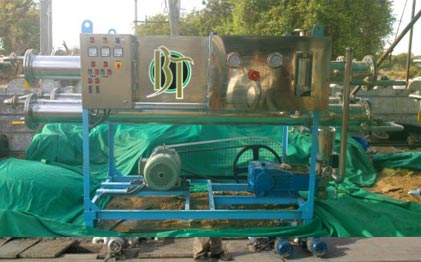
- Packaged ETP
- Poultry ETP, Sugar Mill ETP
- Food Processing ETP, Dairy & Milk Processing ETP
- Distillery ETP, Beverages & cold drinks ETP
- Pharmaceuticals ETP, Effluent Specific Treatment
Biological & Chemical Effluent Treatment Plants
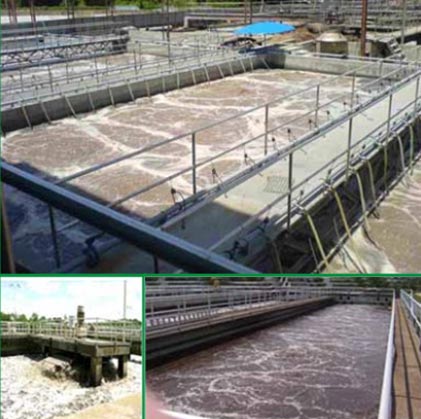
Industries are under increasing regulatory pressure to treat and eliminate industrial wastes which contain contaminant such metals, chemicals, oils and organics. BT has been addressing industries needs through development of biological and chemical techniques for applications in Sugar and distilleries, chemical processing, Pulp and Paper manufacturing, Slaughter house and Meat processing, Food & Beverage industries, Pharmaceuticals and Bulk drugs industries, Cement industries, Laundry etc
Pre - treatment and post-treatment systems are also provided by BT which results in complete waste water treatment systems designed for specific applications. In addition, turnkey system capabilities are available which


